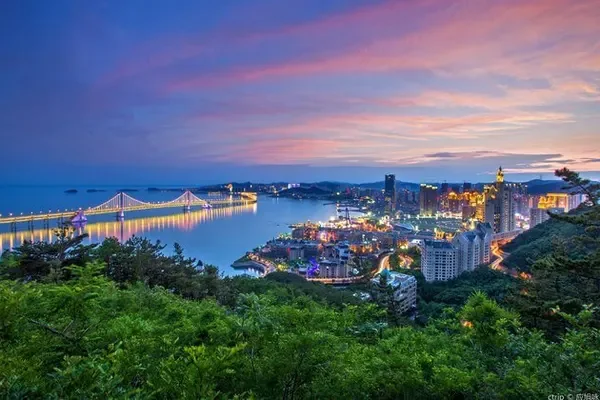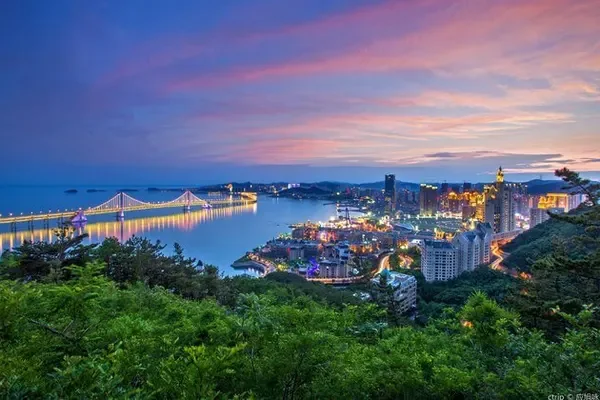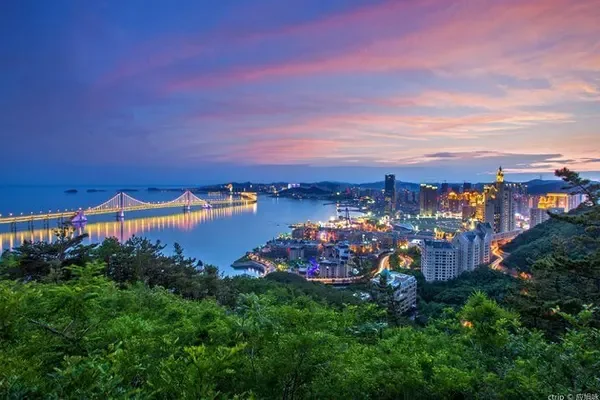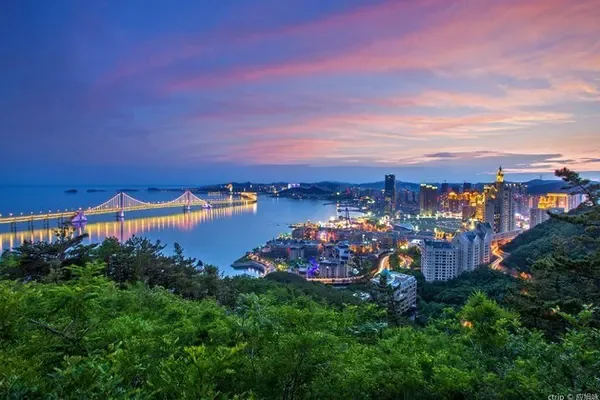itinerary schedule

Zhengding County is located in the southwestern part of Hebei Province, in the central Jizhong Plain in the middle of the North China Plain. It was called Changshan and Zhending in ancient times. The hometown of the centenary emperor Zhao Tuo and the ever-victorious general Zhao Yun.
There are many cultural relics and historic sites in Zhengding. In 2010, there are 38 existing buildings since the Sui and Tang Dynasties, among which 9 are nationally protected, 5 are provincially protected, and 24 are county. Ranked second among county-level administrative regions. It is known as "three mountains are missing, nine bridges are not flowing", "nine floors, four towers, eight temples, and twenty-four golden arches". Longxing Temple, which was built in the sixth year of Emperor Kaihuang's reign in the Sui Dynasty, is one of the ten famous temples in China. It is called "the first famous temple outside Beijing" by Mr. Liang Sicheng. The Nidian Temple is an isolated example of ancient architecture in the world, the Longzang Temple Stele is known as "the No. The bell tower of Kaiyuan Temple is the only existing Tang Dynasty bell tower in China. The Lingxiao Pagoda of Tianning Temple, the Sumeru Pagoda of Kaiyuan Temple, the Chengling Pagoda of Linji Temple, and the Duobao Pagoda of Guanghui Temple have unique shapes, exquisite architecture, and high architectural and aesthetic value. They are known as the "treasure house of ancient architectural art". "Museum of Buddhist Culture".
9 national security sites: Longxing Temple, Kaiyuan Temple, Huata of Guanghui Temple, Chengling Pagoda of Linji Temple, Lingxiao Pagoda of Tianning Temple, Dacheng Hall of County Confucian Temple, Fu Confucian Temple, Fengdong Monument of Tang Dynasty, Zhengding Ancient City Wall. 5 provincial protection sites: Western Yangshao Cultural Site, Xiaoke Longshan Cultural Site, Xinchengpu Shangzhou Site, Liang's Ancestral Hall, and Wang Family Cemetery.

October 1, 2019
On the evening of October 1, I took the high-speed train to Shijiazhuang Station. Check-in at Rujing Hotel.








October 2, 2019
1. Zhengding Home Inn (Small Commodity City Branch)




2. Zhengding Street View









3. Rongguo Mansion
Rongguo Mansion was strictly designed and constructed according to the famous Chinese classical literature "Dream of Red Mansions". The entire project broke ground in December 1984 and was completed and opened in July 1986. In 1983, CCTV planned to shoot a large-scale TV series "Dream of Red Mansions" and sought local governments to build a temporary location base for Rongguo Mansion. Comrade Xi Jinping, then Secretary of the Zhengding County Party Committee, keenly saw business opportunities, contacted CCTV and quickly reached an agreement that Zhengding County would provide the site free of charge to build the real Rongguo Mansion. In July 1986, Rongguo Mansion, which took 1 year and 8 months, covered an area of 55 mu, and cost more than 3.5 million yuan, was successfully completed. The completion of Rongguo Mansion has greatly promoted the development of Zhengding's tourism industry and created a precedent for the national tourism industry. It is known as "China's tourism, Zhengding model".
Rongguo Mansion is a feudal palace built according to the "Jinmen Yuhu Immortal Mansion, Guidian Lan Palace Concubine's Home" described in "A Dream of Red Mansions". It covers an area of 22,000 square meters and a building area of 4,700 square meters. There are two hundred and twelve rooms and one hundred and two verandahs. The entire mansion is divided into middle, east and west roads, each of which is a five-entry courtyard: the middle road is the Jiazheng government office, which adopts solemn palace-style paintings, and the east and west roads are inner courtyards, which adopt the bright Soviet style. Painted, indoor floor-to-ceiling flower covers are elegant and elegant, Ming and Qing-style furniture are exquisite and luxurious, 23 scenes, 150 figures; more than 1,600 antiques, calligraphy and paintings, reappearing "Zhongming Dingshi Home, Poems and Books" The grandeur of the family of calligraphy and ink. On the west side of the mansion, in Yiyuan, the four-season flower pavilion is antique, and the small bridges are full of winding mountains and rivers, just like a small and unique Suzhou garden. In the "Dream of Red Mansions, Poetry, Painting, and Stone Carving Exhibition" in the back wall room, more than 200 famous calligraphers including Qi Gong, Zhang Aiping, Huang Qi, and Ouyang Zhongshi were invited to write ink.











Rongguo Mansion is a multi-entry courtyard house in the form of a front hatchback with a deer top and a mountain. It is divided into middle, east and west roads. The middle road was built in 1986. The middle road is followed by Rongfu Gate, Outer Instrument Gate, Xiangnan Hall, Neiyi Hall, Rongxi Hall, Houweifang, and Jiazheng Government Office. The east and west roads are the inner courtyard, which adopts the Soviet style painting. On the West Road there are Xijiao Gate, Hanging Flower Gate, Marble Screen Hall, Jiamu Flower Hall, Jiamu Main Room, Rongqing Hall and Fengjie Courtyard. On the east road are Mrs. Wang's courtyard and Jia's amnesty courtyard.
The hanging flower gate is a palace-style ridge, with carved beams and painted buildings, and there are two obvious inverted hanging flowers, so it is called "hanging flower gate". There are green roof walls with flower windows on both sides of the door. Carved with a variety of patterns. In order to build the vertical flower gate, technicians have visited Beijing several times to observe. It was here that Lin Daiyu got off the bridge when she entered Jia's mansion, and she was helped in by the maidservant. The door in the middle is a screen, which is not opened at ordinary times and only walks from both sides. Only when rich ladies come to visit, the gates are opened layer by layer. Entering from here, the six courtyards connect back and forth, connecting layers. In each courtyard, the main building and the east and west wing rooms are connected by curved corridors and paintings. There are cross-shaped corridors in the courtyard, and there are many kinds of flowers and trees such as lilac, magnolia and crabapple on both sides.
Jiamu Flower Hall is a place where Jiamu enjoys flowers, the moon, listens to books, watches plays, entertains guests, and celebrates birthdays for her children and grandchildren. When watching a play, the windows are opened, and a stage is set up on the south side, on which the Jinling Twelve Palaces perform. Jia Mu and others watch while drinking and talking.
Fengjie Courtyard, where Wang Xifeng lives, has basically the same layout as the "Rongxi Hall". It is a small courtyard with a front hatchback and a verandah. The east side room is the bedroom of Ping'er, the eldest girl of Tongfang. The West Wing is the residence of Jia Lian's concubine Qiutong, and the East Wing is where Jia Lian's other concubine, You Erjie, lives.
There are two small gardens in the Rongguo Mansion Scenic Area, the East Garden and the West Garden. The East Garden is to the east of Jia Zheng's study. In addition to planting all kinds of flowers in the courtyard, there are also two pools of bamboo. There is a "Dream of Red Mansions Poems, Paintings and Stone Carvings Exhibition" in the back enclosure of the Rongguo Mansion Scenic Area.
The people in Rongguo Mansion are divided into four generations. The first generation is Jia Daishan, the second generation includes Jia She, Jia Zheng, and Jia Min, the third generation mainly includes Jia Baoyu, Jia Lian, Jia Zhu, Jia Yuanchun, Jia Yingchun, Jia Tanchun, Jia Huan, Lin Daiyu, etc. There are Qiaojie and Jialan in the fourth generation.



































































Daguanlou














3. Cao Xueqin Memorial Hall
Zhengding Cao Xueqin Memorial Hall is located in Rongguo Mansion, a national AAAA-level tourist attraction. It is the first cultural landscape in my country that integrates authors and works. The memorial hall covers an area of 960 square meters. It is a courtyard with two entrances. There are 23 rooms in the courtyard. The main exhibition hall is divided into six parts: one is the exhibition of Cao Xueqin's life; Exhibition of Famous Masters of Five Red Studies; Exhibition of Six Red House Culture and Folk Artifacts.
The Cao Xueqin Memorial Hall uses various display methods to describe the historical process of the Cao family from prosperity to decline through physical objects, books, art works, etc., and explores the life origin of the great work "A Dream of Red Mansions". In order to make people understand the writing process of "Dream of Red Mansions", various versions of "Dream of Red Mansions" and works and books related to red studies are displayed, fully demonstrating the far-reaching influence of "Dream of Red Mansions" in China and the world.
According to historical records, Cao Xueqin’s father, Cao Xi, was a descendant of Song Wuhui Wang Cao Bin. Cao Bin was from Lingshou County, Hebei Province. Lingshou belonged to Zhending Mansion (now Zhengding, Hebei Province) since Song, Yuan, Ming and Qing Dynasties, which proves Cao Xueqin’s ancestral home The relationship with Zhengding, Hebei. On the 20th anniversary of the completion of Rongguo Mansion, in order to commemorate the great author of "Dream of Red Mansions" - Cao Xueqin, we built the Cao Xueqin Memorial Hall in the real scene of the literary masterpiece "Dream of Red Mansions" to commemorate it.
The more we know about Cao Xueqin, the deeper our understanding and appreciation of "Dream of Red Mansions". After visiting the memorial hall, go to the Rongguo Mansion in his writing, and you will be able to better understand the meaning of the book and the author's intentions.









































4. Ning Rong Street
Ningrong Street has a total length of 200 meters, covers an area of 15,000 square meters, has a construction area of 1,700 square meters, and has 120 rooms to form 51 shops with different styles. Designed according to the picture, the houses are well arranged, the flags are waving on the street, and the plaques are complete, which reproduces the scene of the prosperous age of Kangxi and Qianlong.







After the completion of Rongguo Mansion, the 36-episode TV series "Dream of Red Mansions" was filmed here for nearly two months in 1986, with more than 2,000 shots. Completed. Since then, he has filmed 196 film and television dramas such as "Kangxi Dynasty", "Who Controls Ups and Downs", "Begonia Is Still", and the small drama "Dream of Red Mansions".
October 3, 2019
1. Longxing Temple
Longxing Temple was originally the Longteng Garden of Yan Murongxi during the Sixteen Kingdoms period of the Eastern Jin Dynasty. Emperor Wen of the Sui Dynasty rebuilt a temple in the garden in the sixth year of Kaihuang (586), and it was called Longzang Temple at that time. In the Tang Dynasty, it was renamed Longxing Temple.
In the second year of Kaibao in the Northern Song Dynasty (969), Song Taizu Zhao Kuangyin came to Zhengzhou (later Zhengding) after conquering Hedong. Bronze casting of the Great Compassion Bodhisattva, the two catastrophes of Khitan's violation of the world in the later Han Dynasty and Shizong's destruction of Buddha and casting money in the later Zhou Dynasty, and after listening to the prophecy of the temple monk that "it will be destroyed when it meets the show, and it will be impromptu in the Song Dynasty", it was ordered to be recast in Longxing Temple in the city. The golden body of the Great Compassion Bodhisattva, and the Great Compassion Pavilion was built. It was started in the fourth year of Kaibao (971) and completed in the eighth year of Kaibao (975). With this as the main body, the central axis layout was used to expand and expand, forming a Song Dynasty architectural complex with a deep north-south, large scale, and majestic style.









2. Liang Sicheng Memorial Hall
Talking about Zhengding's achievements in cultural relic protection is inseparable from Liang Sicheng. From 1933 to 1963, Liang Sicheng went to Zhengding three times to inspect the ancient buildings, and recorded the real situation of the ancient buildings in Zhengding at that time with a large number of pictures, texts and drawings. The protection of cultural relics in Zhengding has left precious historical materials.
Liang Sicheng is a famous master of ancient Chinese architecture. He devoted his whole life to the research of ancient Chinese architecture and architectural education. He systematically investigated, sorted out and studied the history and theory of ancient Chinese architecture. He is the pioneer and founder of this discipline. In the 1930s and 1940s, Liang Sicheng, his wife Lin Huiyin and other colleagues surveyed more than 2,000 ancient buildings across the country, covering nearly 200 counties and cities in 15 provinces across the country, and presided over the compilation of "History of Chinese Architecture" for Great contributions have been made to the research and protection of ancient buildings in our country.
In order to commemorate Mr. Liang Sicheng's contribution to the protection of cultural relics in Zhengding and even the whole country, and to carry forward his spirit of cultural relics protection, on the basis of doing a good job in the maintenance of the abbot's courtyard of Longxing Temple, he uses his house courtyard to open an exhibition of historical sites of Liang Sicheng's cultural relics protection.
Liang Sicheng Cultural Relics Protection Historic Site Exhibition has four exhibition halls: the first exhibition hall, Yuhua Hall, mainly displays Mr. Liang Sicheng’s background and study experience; the second exhibition hall, East Wing Room, mainly displays Mr. The living conditions during Zhengding’s investigation; the third exhibition hall, the main room, mainly displays the scene of Mr. Zhengding’s investigation of ancient buildings; the fourth exhibition hall, the West Wing Room, mainly displays the protection of cultural relics all over the country under the guidance of Mr. Great achievements in work, etc.






























3. Tianning Temple
The Lingxiao Pagoda of Tianning Temple is located in the former Tianning Temple on the north side of West Dazhong Street of Longxing Temple in Zhengding. It is named for its majesty and loftiness. Because the tower body is mostly made of wood, it is commonly known as a wooden tower. The Lingxiao Pagoda of Tianning Temple was first built in the Xiantong period of the Tang Dynasty (860-874). Lingxiao Pagoda of Tianning Temple is a 9-story pavilion-style pagoda of brick and wood structure, 41 meters high, octagonal in plane, and stands on an octagonal platform. The first to fourth floors of the Lingxiao Pagoda in Tianning Temple were rebuilt in the Song Dynasty on the remnants of the Tang Pagoda, with a brick structure, and the upper floors and sides were rebuilt in the Jin Dynasty, with a brick and wood structure. The Lingxiao Pagoda of Tianning Temple has arched doors or mullion windows on the front of each floor. From the fourth floor to the ninth floor, the half arches and eaves are all made of wood. Tianning Temple Lingxiao Pagoda starts from the fifth floor, and the height of each floor shrinks layer by layer, giving people a sense of lightness and tallness. The biggest feature of this tower of Tianning Temple Lingxiao Pagoda is that a wooden pillar reaching the top of the tower is erected in the center of the fourth floor of the tower body, and eight radial beams are made to connect with the outer eaves according to the layers. It is made of iron, and the nine-layer phase wheel is in the shape of a jujube core. The Lingxiao Pagoda of Tianning Temple is the only existing example in China, which is extremely valuable. Lingxiao Pagoda of Tianning Temple is different in structure from wooden pagodas, and also from ordinary brick-wood structure pagodas.







4. Zhao Yunmiao
On April 13, 1997, the Zhaoyun Temple rebuilt by the Zhengding County Tourism Bureau on the site of the original Daoguang period was officially opened to tourists. The newly built Zhaoyun Temple is magnificent, covering an area of 12 mu, with a total construction area of 1500 square meters. The temple adopts an imitation of the ancient architectural structure of Ming and Qing Dynasties, and is divided into the first courtyard and the second courtyard. The main buildings include Temple Gate, Siyi Hall, Wuhu Hall, Junchen Hall and Shunping Hou Hall, which basically preserve and enrich the historical features of the original temple.


October 4, 2019
1. Hebei Museum
Hebei Museum is located in the Cultural Square of Shijiazhuang City, Hebei Province, starting from Zhongshan Road in the north, Fanxi Road in the south, Dongdajie in the east, and Xidajie in the west.
There are 9 permanent exhibitions in Hebei Museum: "Hebei in the Stone Age", "Hebei Shang Dynasty Civilization", "Generous Elegy - Story of Yanzhao", "Warring States Heroes - Ancient Zhongshan Kingdom", "Sweet Song of the Great Han Dynasty - Mancheng Han Tomb", "Glimpse of a Hundred Years - Modern Hebei", "Northern Dynasty Murals", "Quyang Stone Carvings", "Famous Kiln and Famous Porcelain".









































2. Yanzhao Street


















3. Chengling Pagoda of Linji Temple
Linji Temple, formerly known as Linji Temple. It was first built in the second year of Xinghe (540) of Emperor Xiaojing of the Eastern Wei Dynasty. In the eighth year of Tang Xuanzong's Dazhong (854), the monk Yixuan received precepts from Huangbo Xiyun Zen Master, and later came to Linji Temple as the abbot. Zhengding Linji Temple is the birthplace of Linji Buddhism, which was built in the second year of Xinghe in the Eastern Wei Dynasty (540). In the eighth year of Tang Dazhong (854), monk Yixuan founded the Linji Sect here. Because of the steep peak of the Linji Sect, it has gained a great reputation at home and abroad. Worship the ancestral home. Therefore, Zhengding Linji Temple is the earliest Buddhist Linji Temple in the world, and it is also the ancestral home of Linji Sect in the world. The 91-year-old abbot Shi Youming is the 45th generation successor of Linji Sect and still abbots Linji Temple. The Chengling Pagoda in the temple is the relic pagoda of Zen Master Yixuan, the founder of Linji Sect. It was built in the Tang Dynasty. It is an octagonal and nine-level dense eaves pagoda with a height of 30.47 meters. The ancient pagoda has a tall and straight shape and gorgeous carvings. Mr. Liang Sicheng praised it as "clear and beautiful, the top grade in the pagoda". In 2001, Chengling Pagoda was announced as a national treasure.


4. Guanghui Temple
Zhengding Guanghui Temple is located on the east side of Yanzhao South Road in Zhengding Historical and Cultural District, on the north side of Guanghui Road, 300 meters north of Linji Temple, a national key temple. Zhengding Guanghui Temple was built in AD 785-804 (the first year of Tang Zhenyuan), and it is one of the eight major temples in Zhengding. There is only one Huata in the temple building, so it is also called "Huata Temple", also known as Duobao Pagoda. "Zhengding Guanghui Temple Huata" has extremely high historical, architectural, aesthetic and other values.





5. Zhengding Ancient City Wall (North Gate)
The ancient city wall of Zhengding was first built in the Northern Zhou Dynasty, and it was originally built of stone. In the first year of Tang Baoying (762), due to the flooding of the Hutuo River to irrigate the city, the city collapsed and was expanded. In the 14th year of Ming Zhengtong (1449), it was expanded into an earthen city with a circumference of 24 miles, a height of three feet and two feet, and an upper width of two feet. In the fifth year of Longqing (1571), Gu Shou, the magistrate of Zhending County, began to change the earth city into a brick city. Later, Zhou Yingzhong, the county magistrate, applied for more than 60,000 taels of treasury silver, expropriated the people of the counties under the jurisdiction of Zhending Prefecture, and started construction in sections. Year (1576) completed. The gates of the four cities are called Yingxu in the east, Changle in the south, Zhenyuan in the west, and Yong'an in the north, all of which are attached with Yuecheng and Wengcheng. Reconstruction or reconstruction in later generations is also carried out on this basis. Played an important role in flood prevention and military defense. Due to historical reasons and the development of urban construction in recent years, Zhengding City has mostly been an earthen city except for the existing city gate. The east city gate has been buried under the defense fortifications, the south gate Cunli city gate and Wengcheng gate, the Xicunli city gate, Wengcheng gate, Beicunli city gate and Yuecheng gate.


























October 5, 2019
After a rest in the morning, after lunch, I took a taxi to the train station and took the high-speed train back to Beijing.



